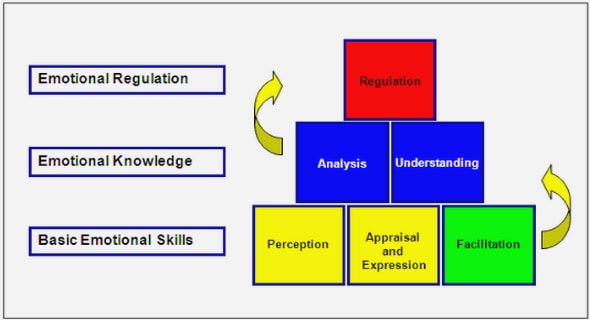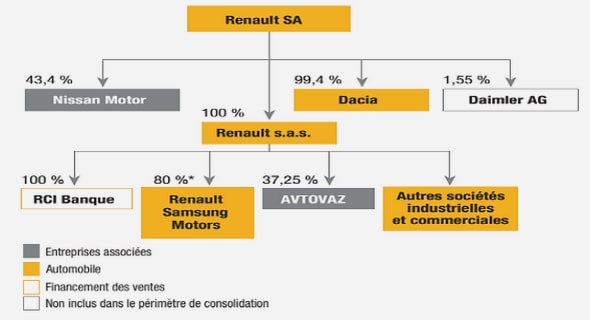Get Complete Project Material File(s) Now! »
Rare Earth Elements in the seawater
Similar to isotopic tracers, the relative abundances of the individual rare earth ele-ments can be used to trace chemical reactions, mixing processes and geochemical input fluxes. They show a similar chemical behaviour due to the similarity of their electron configuration, but their properties such as the ionic radii gradually change from the light to the heavy REEs, affecting their compatibility in crystal structures and their complexation in fluids (e.g., Hanson, 1980; Elderfield, 1988). Furthermore, some REEs can be present in valence states different from the common REE3+ form (e.g., Ce4+, La2+; Goldberg et al., 1963). Due to these properties, geochemical processes such as melting, crystallisation, dissolution, or precipitation lead to distinct REEs patterns (i.e. relative REE concentrations) that are characteristic of the sources, environments, and processes involved, making the REEs powerful tracers (e.g., Hanson, 1980; Elderfield and Greaves, 1982; McKenzie and O’nions, 1991; Sholkovitz, 1995).
Unlike the Mg and Sr isotope ratios that are homogeneously distributed in the oceans (Broecker and Peng, 1982; Foster et al., 2010), current oceanic REEs patterns show spatial variability (Elderfield and Greaves, 1982), indicating that their residence times can be shorter than the mixing time of the oceans of approximately 1000 years (Broecker and Peng, 1982). The input sources of dissolved REEs in the seawater are typically assumed to have shale-like REE patterns (Elderfield, 1988). Therefore, seawater REE patterns normalised to that of shale are characteristic of the processes removing REEs from the seawater. Dissolved REE concentrations in the seawater increase with depth in a similar way to nutrients which are taken up by phytoplankton and biogenic particles in surface waters (e.g., Elderfield, 1988; Bruland et al., 2014). However, as the REEs have no biological function, the removal of the REE is likely controlled by passive adsorption onto particles and incorporation into precipitating carbonates that can take up significant amounts of REE (Schijf et al., 2015). Based on the comparison of vertical variations of seawater REE patterns with experimentally determined affinities of the REEs for different solids, Schijf et al. (2015) deducted that REE scavenging in the deep oceans may be dominated by hydrated manganese oxides, while sorption onto the green macroalga Ulva lactuca and calcite potentially control REE concentrations in shallow seawater. Cerium can be easily oxidised to Ce4+ in seawater, in which case formation of insoluble Ce-oxides leads to its removal from the seawater (Elderfield, 1988), so that dissolved Ce concentrations are indicative of the redox state. Detailed analysis of the resulting negative Ce anomalies in oceanic REE patterns (Figure 1.3) indicates that rapid oxidative removal occurs in the surface waters and continues in the deep oceans over the mixing-time of the oceans (Elderfield, 1988; German et al., 1995). Conversely, marine hydrothermal fluids exhibit a positive Eu anomaly (Figure 1.3 and Klinkhammer et al., 1994), suggesting strong reactions with plagioclase in the hydrothermal systems, as plagioclase can take up significant proportions of Eu2+ (Philpotts and Schnetzler, 1968).
Isotopic ratios and fractionation
The description of fractionation at thermodynamic equilibrium (section §1.2.1) and its dependence on reaction rates (section §1.2.2) also applies for the fractionation of two isotopes of the same element. However, the magnitude of fractionation is considerably smaller for two isotopes because of their similar properties. In this context, the partition coefficient D defined in equation (1.2) is mainly called fractionation factor associated with the symbol α, or expressed as ε ≡ α − 1 and given in units of per mil (‰). Similarly, stable isotope ratios are most often expressed relative to a standard in the delta notation iX/jX Sample δi/jX ≡ − 1 (1.15).
where iX designates the isotope with mass number i of element X. While isotopes show a very similar chemical behaviour, the sense and magnitude of this slight fractionation is characteristic of the processes involved, making them a popular class of tracers. How-ever, the determination of differences in the abundance ratios can be challenging due to small degrees of fractionation. As most isotopic fractionation is related to the relative mass differences of the isotopes (see below), the fractionation is generally stronger for light elements. Mass spectrometers are the most common instrument used to quantify natural differences in isotope ratios arising from radioactive decay and stable isotope fractionation. Yet, only advancements in the thermal ionisation mass spectrometry (TIMS) and the development of the multi-collector inductively coupled mass spectro-meter (MC-ICP-MS) over the last decades lead to the possibility to routinely measure the small differences in stable isotope ratios of heavy elements (e.g, Maréchal et al., 1999; Vanhaecke et al., 2009; Jakubowski et al., 2011).
As many elements have three or more isotopes, the relationship between the frac-tionation factors of the individual isotope pairs and properties of the isotopes is of considerable interest. Most fractionation found in nature is related to the mass dif-ferences of the isotopes, although mass-independent fractionation has been reported for oxygen (Clayton et al., 1973) and sulfur (Farquhar et al., 2000). Furthermore, the predominant mass-dependent effects can be explained by a combination of classical mechanical and quantum mechanical effects as shown by Bigeleisen and Mayer (1947) and Urey (1947). While Bigeleisen, Urey, and co-workers showed that absolute frac-tionation factors for simple reactions can be calculated from spectroscopic data alone, this approach is challenging for reactions of relevance in Earth Sciences because of the complexity of the materials and reactions involved. However, it is possible to derive simple relationships between the fractionation factors of different isotopes of the same element from this theoretical framework. At equilibrium, no isotopic fractionation arises from classical mechanics, but quantum mechanical considerations predict that the fractionation factors in a three isotope system are related by α2/1 = α3/1 β (1.16).
Analytical methods
All liquid samples were analysed for their pH, elemental compositions and Sr isotopic composition. pH was measured using a Metrohm microelectrode at a temperature of 22 ± 1 ◦C. The electrode was calibrated with three NIST traceable pH buffer solutions (pH 4.0, 6.9 and 9.2) before each use, and the precision of these measurements is estimated to be ±0.07 pH units based on replicate analyses of buffers and samples.
Liquid samples from the 250 ◦C experiments were analysed for their Na, Mg, Si, K, Ca, Sr, and Fe contents using a ThermoFisher inductively coupled plasma atomic emission spectrometer (ICP-AES), and Al contents were determined by furnace atomic adsorption spectrometry (AAS) using a Perkin Elmer AAnalyst 600. Concentrations of Mg, Si, K, Ca, Sr, Fe and Al in the liquid samples from the experiments at 290 ◦C were determined by inductively coupled plasma mass spectrometry (ICP-MS) using an Agilent 7500ce with a known amount of In and Re added as internal standard. For these samples, Na contents were determined using a Perkin Elmer AAnalyst 400 flame AAS. The seawater used as reactant was analysed by all of the above mentioned techniques, and the concentrations determined by the different techniques are in agreement with each other within the uncertainties. Aqueous SO42 – and Cl– of all liquid samples were determined using a Dionex ICS 2000 ion chromatography (IC) system. All calibration standards were prepared from aqueous Merck Certipur solutions.
The 87Sr/86Sr and δ88/86Sr isotopic ratios of both solid and liquid samples were de-termined by thermal ionisation mass spectrometry (TIMS) using a ThermoFisher Tri-ton at the National Oceanography Centre, Southampton following the sample prepara-tion and analytical procedures described in Pearce et al. (2015a). For each sample, an unspiked and a spiked aliquot (containing an additional 84Sr-87Sr solution of known iso-topic composition) were analysed, allowing correction for mass fraction during sample preparation and analysis. Radiogenic 87Sr/86Sr ratios were determined by correcting the data from the measurements of the unspiked sample for instrument mass frac-tionation assuming a 86Sr / 88Sr value of 0.1194 (Nier, 1938) and the exponential mass fractionation law. The raw mean 87Sr/86Sr of NIST SRM 987 during this study was 0.710251 (2 SD = 7 ppm), though all reported 87Sr/86Sr compositions have been cor-rected to an SRM 987 87Sr/86Sr value of 0.710248 (McArthur et al., 2012). Stable Sr isotope ratios were determined from deconvolution of the spiked and unspiked meas-urements using the exponential mass fractionation law and a Newton-Raphson optim- isation. The δ88/86Sr values, defined as δ88/86Sr ≡ ((88Sr/86Sr))Sample −1, are given relative to the mean of the repeated analyses of the NIST SRM 987 standard.
The two basalt powders used as reactants and the solid reaction products recovered from the reactors were analysed by scanning electron microscopy (SEM) using a Jeol JSM 6360LV equipped with an electron dispersive spectroscope (EDS). Powder X-ray diffraction (PXRD) patterns of the unreacted basalt powders and of the solids recovered from the reactors after the experiments were recorded on a PANalytical X’Pert PRO diffractometer (Co-Ka radiation) operated at 40 kV and 40 mA. This diffractometer is outfitted with a Scientific X’Celerator detector, 0.5° antiscattering and divergence slits, spinner stage, primary and secondary soller and automatic sample changer. The top loading technique was used for the preparation of the samples. The specimens were examined over the range 4° to 84° 2Θ using a step size of 0.008° 2Θ and a count time of 40 s per step. Phase identification was made using the PANalytical X’Pert HighScore Plus software and a pdf-2 database. In addition, the mineralogies of the experimental solids and of two naturally-grown standards, namely the Garfield nontronite (Unites States) and ferrous saponite from the Saar-Nahe Basin (Germany), were studied by Fourier transform infra-red spectroscopy (FTIR) using a PerkinElmer Frontier FTIR spectrometer (Baldermann et al., 2014). Standard KBr pellets were prepared by mixing 1 mg of sample with 200 mg KBr. Subsequently, mid-infrared (MIR) spectra were recorded in the range from 4000 to 650 cm−1 with a resolution of 2 cm−1.
Thermodynamic calculations
The saturation states (Ω) of solid phases were calculated using PHREEQC (Parkhurst and Appelo, 2013) together with its Lawrence Livermore National Laboratory (LLNL) database (Johnson et al., 2000) at the experimental temperature and saturated va-pour pressure. The enthalpy of the aqueous MgSO4 complex dissociation reaction was taken from the minteq.v4 database, as it is consistent with the results of Allison et al. (1991). In these calculations, the standard state for solid phases and H2O is the pure phase, while a hypothetical 1 mol/kg aqueous solution referenced to infinite dilution is chosen for unit activity (a) of aqueous species, both at the temperature and pressure of interest. The Livermore National Laboratory aqueous model (Daveler and Wolery, 1992), which uses the extended Debye-Hückel equation (Helgeson, 1969) was used to calculate activity coefficients (γ) of the aqueous species. As the redox state of the fluids was not specifically analysed, calculations were carried out assuming oxidising conditions (i.e. aqueous S is in the form of S6+). The saturation index (SI) is defined as the base-10 logarithm of the saturation state Ω, which is the ratio of the ion activity product and the equilibrium constant of the precipitation reaction. Due to the quality of the thermodynamic database at temperatures of 200 to 300 ◦C and at seawater-like salinities, it seems reasonable to expect that the saturation indexes calculated for the reactive fluid samples collected in this study are somewhat uncertain. For anhydrite and quartz, minerals that contain few components the uncertainties associated with their calculated saturation indexes are likely no more than 0.2, in contrast, for feldspars and clay minerals, which have more complex hydrolysis reactions, such uncertainties likely exceed 1.
Uncertainties
Unless otherwise stated, uncertainties in this study represent the 95 % confidence in-terval (CI). The ± symbol is used to denote the half-width of the confidence interval (for normally distributed values, this corresponds to approximately 1.96 standard errors (SE)). Where possible, uncertainties were propagated through functions using linearisa-tions. For non-algebraic or highly non-linear functions, Monte Carlo simulations were used to estimate the transformed probability distribution and the confidence interval is calculated from its quantiles.
Evolution of the liquid composition during the experi-ments
The composition of the liquids sampled from the reactors changed significantly during the experiments (Figures 2.3 and 2.4, Table 2.4 on page 41). Magnesium and SO42 – were almost completely removed from the initial seawater within one week of reaction with basaltic glass at both studied temperatures. This removal was slower in the crystalline basalt experiments, so that near complete Mg removal was only achieved after three weeks at 250 ◦C. Calcium concentrations, after a period of steady or slightly decreasing values at the beginning of the experiments, increased during the later stages in all experiments, attaining values of approximately 42 mmol/kg (the only exception being the experiment with basaltic glass at 290 ◦C, where 79 mmol/kg Ca was present in the final liquid sample). The greatest increases of Ca coincided with enhanced Mg removal, i.e. an inverse correlation of Ca and Mg trends can be observed. Similarly to Ca, aqueous K concentrations increased during all experiments, reaching values as high as 24 mmol/kg in the 290 ◦C, basaltic glass experiment and approximately 17 mmol/kg in the other experiments.
pH
The ambient temperature pH in the basaltic glass experiment only showed a slight decrease at 250 ◦C before its steady increase to approximately 9.5 at both temperatures (Figures 2.3 and 2.4, Table 2.4 on page 41). Conversely, the pH attained acidic values of 3.7 and 4.9 during the crystalline basalt experiments at 250 ◦C and 290 ◦C, respectively, before it increased to approximately 9.2.
Strontium
After dropping during the first 24 h, aqueous Sr concentrations followed the same trend observed for Ca, first decreasing then increasing during the rest of the experiment (Figure 2.5, Table 2.4 on page 41). In the basaltic glass experiments, the radiogenic 87Sr/86Sr isotope ratios decreased from the initial seawater value (0.709173) and at-tained values similar to that of the basaltic glass (0.703193) within one day. This process is slower in the crystalline basalt experiment at 290 ◦C, where similar 87Sr/86Sr ratios were reached within 4 days. In the corresponding 250 ◦C experiment the largest decrease in 87Sr/86Sr occurred between days 7 and 21, but values remained above 0.704210 until the end of the experiment. Here, the drop in 87Sr/86Sr was preceded by a period of slightly decreasing and then increasing values. During the later stages of all experiments, 87Sr/86Sr increased slightly and the highest value of 0.705116 was attained in the 290 ◦C crystalline basalt experiment.
Table of contents :
1 General introduction
1.1 The role of the oceans in geochemical cycles
1.1.1 Marine hydrothermal systems
1.1.2 Rare Earth Elements in the seawater
1.2 Fractionation in Earth Sciences
1.2.1 Thermodynamic equilibrium
1.2.2 Kinetic aspects
1.2.3 Isotopic ratios and fractionation
2 Isotopic fractionation during seawater-basalt interaction: Sr
2.1 Introduction
2.2 Methods
2.2.1 Experimental design
2.2.2 Reactants
2.2.3 Analytical methods
2.2.4 Thermodynamic calculations
2.2.5 Uncertainties
2.3 Results
2.3.1 Evolution of the liquid composition during the experiments
2.3.2 Solid alteration products
2.4 Discussion
2.4.1 Chemical exchange
2.4.2 Strontium isotopic exchange
2.4.3 Implications for the marine Sr budget
2.5 Conclusion
3 Isotopic fractionation during seawater-basalt interaction: Mg
3.1 Introduction
3.2 Methods
3.2.1 Experimental design
3.2.2 Analytical methods
3.3 Results
3.3.2 Solid alteration products
3.4 Discussion
3.4.1 Alteration reactions
3.4.2 Magnesium isotope fractionation
3.4.3 Consequences for the marine Mg isotopic budget
3.5 Conclusion
4 An experimental study of hydroxylbastnasite solubility in aqueous solutions at 25 C
4.1 Introduction
4.2 Methods
4.2.1 Synthesis of starting materials
4.2.2 Experimental design
4.2.3 Analytical methods
4.2.4 Thermodynamic modelling
4.3 Results
4.3.1 Evolution of aqueous solution compositions and solids
4.3.2 Stoichiometry of dissolution
4.3.3 Solubility product calculations
4.4 Discussion
4.4.1 Comparison to fluorobastnasite
4.4.2 Comparison to monazite
4.5 Conclusions
5 The experimental determination of REE partition coefficients in the water-calcite system
5.1 Introduction
5.2 Theoretical background
5.2.1 Thermodynamic description of the partitioning of REEs between calcite and co-existing fluids
5.2.2 Thermodynamic modelling
5.3 Methods
5.3.1 Experimental design
5.3.2 Analytical methods
5.3.3 Uncertainties and statistical criteria
5.4 Results
5.4.1 Characteristics of the solids
5.4.2 Attainment of steady-state reactive fluid compositions and retrieved precipitation rates
5.4.3 REE partition coefficients between aqueous solution and calcite
5.5 Discussion
5.5.1 REEs exchange reactions in the aqueous fluid and calcite system
5.5.2 Differences between the partitioning behaviour of the individual REEs
5.5.3 Variation of REE partitioning as function of precipitation rate .
5.5.4 Inhibition of calcite growth by aqueous REE
5.5.5 REE partitioning in seawater
5.6 Conclusions
6.1 Suggestions for future research
6b Conclusions générales (version française)
6b.1 Suggestions pour des recherches futures
Bibliography


